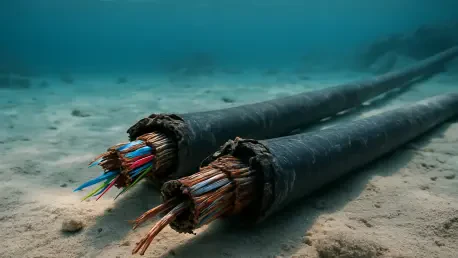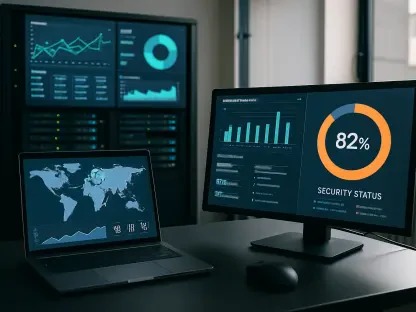Imagine a world where a single underwater mishap can slow down internet access for millions across multiple continents, affecting everything from business operations to personal communications. This scenario became a reality recently when significant damage to undersea fiber optic cables in the Red Sea caused widespread disruptions in global connectivity. Reported by major tech firms, the incident has led to increased latency for users relying on network routes through the Middle East, exposing the fragility of the digital infrastructure that underpins modern life. While traffic outside the region remained unaffected, the event has sparked concerns about the vulnerability of critical internet pathways and the challenges of maintaining seamless connectivity in geopolitically sensitive areas. This disruption serves as a stark reminder of how interconnected and dependent the world has become on a hidden network of submarine cables, prompting urgent discussions on how to safeguard these vital lifelines.
Unveiling the Scope of the Disruption
The trouble began at 05:45 UTC on a recent September morning, when latency issues were flagged for cloud services relying on routes through the Middle East. Multiple submarine cable systems, including SMW4, IMEWE, and FALCON GCX, suffered damage, likely near Jeddah, Saudi Arabia, as noted by internet monitoring entities. These cables form a crucial link for data traffic between Asia, Europe, and the Middle East, and their impairment has directly impacted countries such as India, Pakistan, Kuwait, Saudi Arabia, and the UAE. Telecom providers in the region, grappling with slower speeds, confirmed the disruptions, leaving businesses and individuals struggling with delayed communications and hampered online services. While the precise cause of the damage remains under investigation, historical incidents in the Red Sea point to potential culprits like ship anchors, fishing activities, or even deliberate interference, raising alarms about the security of these essential digital arteries in a tense geopolitical landscape.
Addressing Infrastructure Vulnerabilities and Recovery Efforts
In response to the crisis, affected tech companies swiftly rerouted traffic to minimize service interruptions, with reports indicating that cloud operations in the Middle East have returned to full functionality. However, users may continue to experience lingering latency until the physical repairs are completed—a process that is notoriously complex and time-consuming. Repairing undersea cables demands specialized vessels to locate and mend the damaged segments, often taking weeks depending on weather conditions and resource availability. This incident has cast a spotlight on the inherent fragility of global internet infrastructure, even with built-in redundancies, and underscored the Red Sea’s role as a pivotal hub for data traffic. Looking back, the event highlighted the urgent need for enhanced protective measures and robust contingency strategies to mitigate such disruptions. It also emphasized the intricate challenges of maintaining connectivity in vulnerable regions, prompting a renewed focus on safeguarding the internet’s physical backbone for the future.









